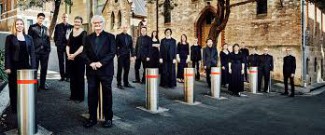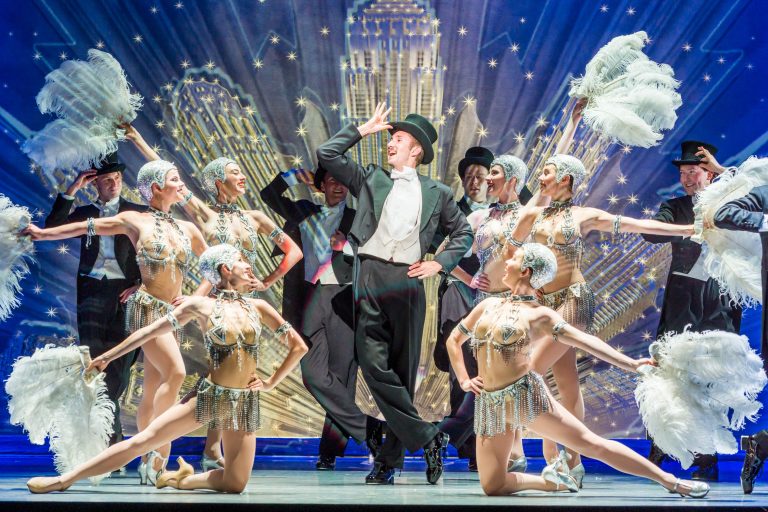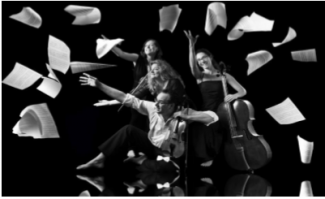Concert Review: Nelson Mass/ Sydney Chamber Choir

Nelson Mass
Sydney Chamber Choir/ Australian Romantic and Classical Orchestra/ Richard Gill
City Recital Hall, October 1, 2016
From Dreaming to Distress, the Sydney Chamber Choir performed masses themed around these diametrically opposed ideas in their concert last weekend.
Conducted by Richard Gill AO, the choir was joined by the newly re-branded Australian Romantic and Classical Orchestra (previously known as orchestra seventeen88 and now sporting the suitable acronym ARCO), led by Rachel Beesley. Richard Gill is Music Director of the Sydney Chamber Choir and Principal Conductor of the Australian Romantic and Classical Orchestra. He brought together both his charges in an auspicious blend of forces and style for a glorious performance, raptourously received by the audience and which augurs well for future projects.
Opening the programme was the Sydney premiere of Ross Edwards’ (b 1943) Missa Alchera (Mass of the Dreaming). The mass premiered in Brisbane in 2009 and surprisingly has not been performed in Sydney until now. It was intended to be identifiably Australian and in the words of the composer, “the mass (is) as much a contemplation as a celebration…….outbursts of intensity….intrude on moments of serene detachment. Listeners may detect shapes and patterns that recall natural voices of the environment as well as various kinds of chant, both liturgical and Aboriginal….Mass of the Dreaming can be said to be ecumenical in the broadest sense.”
Edwards wrote the a capella Missa Alchera for 8 part chorus to the words of the Latin mass, weaving into his music aesthetics of nature, indigenous ritual and dance. On first hearing, it is an imaginative and appealing piece, with a fresh approach to the text and free of musical clichés. The choir’s performance was impressive. Flanked by the sopranos and altos, the tenors and basses took centre stage, the basses opening and sustaining the Kyrie with a low pedal point. The Gloria conveyed jubilation in a minor key ending with repeated insistent affirmations of the glory of God; the hushed and echoing Sanctus segued to a declamatory Hosanna with a lively play on the word; the Benedictus had a distinctly modal feel leading to a contemplative Agnus Dei. The audience conveyed their pleasure with extended applause for the performers and the composer who was present.
The Australian Romantic and Classical Orchestra was established just 3 years ago in 2013 as orchestraseventeen88. The question then – was there a sufficient audience in Sydney to support another chamber ensemble aiming to deliver historically informed performances of classical and romantic repertoire? It seems there is. The orchestra has a distinguished and distinctive sound. Its growth is a testament to its excellence. Cross genre collaborations such as this will further raise its profile and broaden its reach.
The orchestra’s performance of Joseph Haydn’s final symphony, the Symphony no 104 ‘London’ (1795) was sheer pleasure. It is apt to echo Haydn’s own words from the symphony’s premiere in 1795: “The whole company was delighted and so was I”; and from a review of that premiere, “for fullness, richness, and majesty, in all its parts, [it] is thought by some of the best judges to surpass all [Haydn’s] other compositions.”
Playing on gut strings and period instruments, the players met Haydn’s signature style delivering an uncluttered sound that contrasted dark and light, was rhythmically vibrant and constantly moving. They created a marvellous tension in the introductory Adagio played in unison in D minor, eventually revealing the home key of D major with Haydn’s simple yet sophisticated theme. The second movement (Andante) was played with stately grace, the Menuet and Trio with an all-embracing gaiety. The Finale truly conveyed a sense of joie de vivre, its madly swirling passages played with assuredness, cohesion and a sense of abandon befitting a folk tune. The wind section deserves special mention for its exceptionally fine playing.
Choir and orchestra gathered for the second half of the programme which featured another of Haydn’s late works, the Missa in angustiis (1798) (Mass for Times of Distress) nicknamed much later, the Nelson Mass. Considered to be Haydn’s largest mass, like the ‘London’ symphony it contains a D minor/ D major duality. Haydn’s commission came at a time of great uncertainty and fear in Austria; yet the work was intended to celebrate the name-day of the Princess Esterhazy. Consequently, the mass contains moments of great trepidation as well as rejoicing.
The combined forces wielded a menacing soundscape in the opening bars of the Kyrie. Haydn did not separate the solo and ensemble sections of this mass from the choral parts and choristers are often appointed to sing the solos, as was the case in this performance. Soprano Belinda Montgomery combined a purity of tone with agility of surgical precision that was especially evident in the Gloria. In contrast, her rendition of the Et incarnatus was supremely serene. Bass David Greco delivered the long lines of the Qui tollis with elegant phrasing, richness of tone and gravitas; Haydn didn’t allocate much of the spotlight for the alto and tenor soloists in this mass. However, alto Natalie Shea and tenor Luke Byrne were well matched and balanced additions to the solo quartet.
The choir turned out yet another polished performance, demonstrating superb musicianship (as in the counterpoint of the Credo), technical prowess, dynamic control (as in the Sanctus) and an impressive sense of ensemble.
No doubt Richard Gill had his reasons for placing the soloists within the choir behind the orchestra. However, this meant that they had to project their sound over the orchestra and the rest of the choir. While Mr Gill did damp down the orchestra in support of the soloists, the balance, sense of ensemble and sight lines for the audience may have benefited from the soloists being placed further forward and in a closer configuration rather than separated amongst the choir.
Playing in style, the orchestra matched the choir with a clean vibrato-less precision, never overwhelming the chorus.
Future collaborations between the two ensembles are something to look forward to.
Shamistha de Soysa for SoundsLikeSydney©







